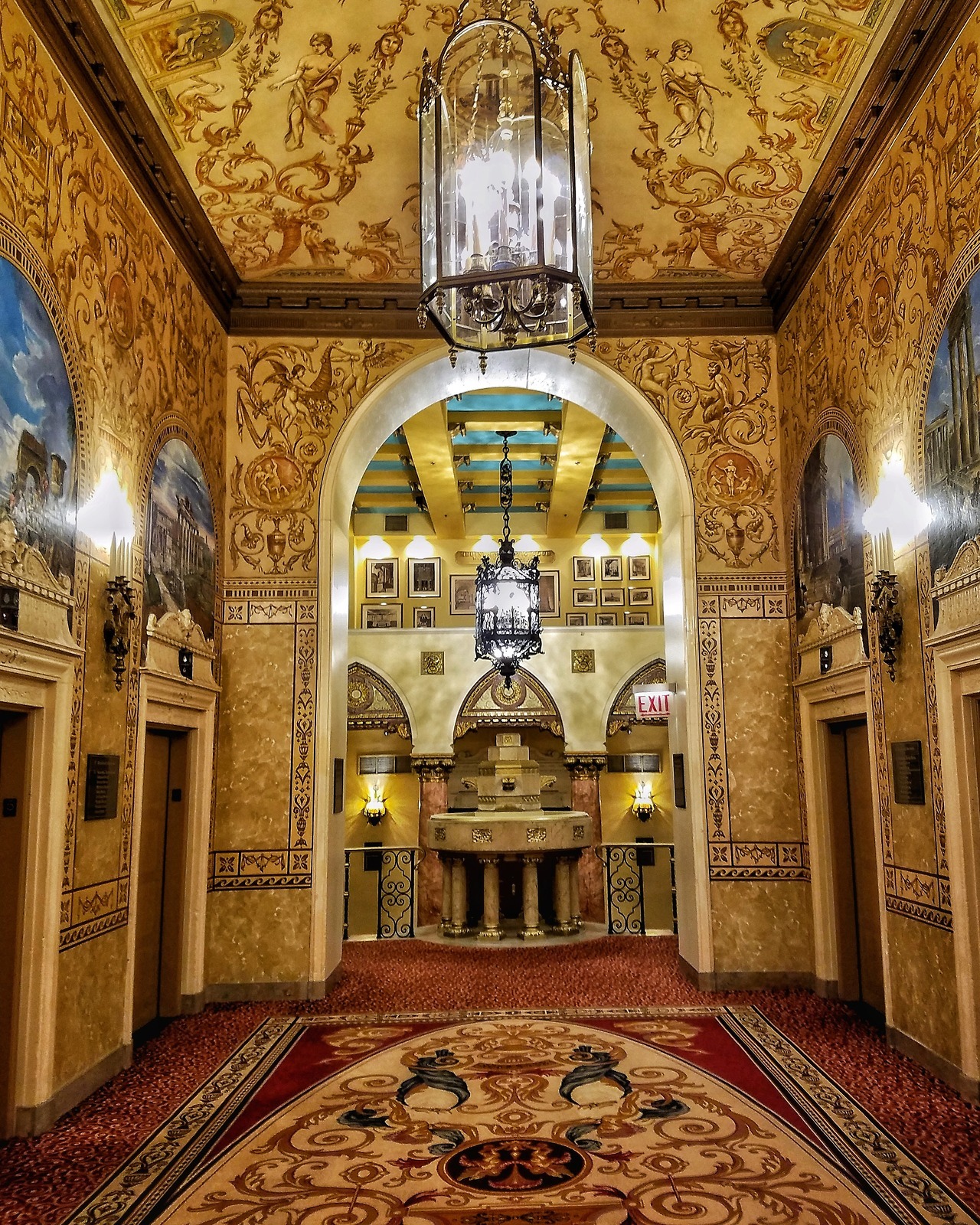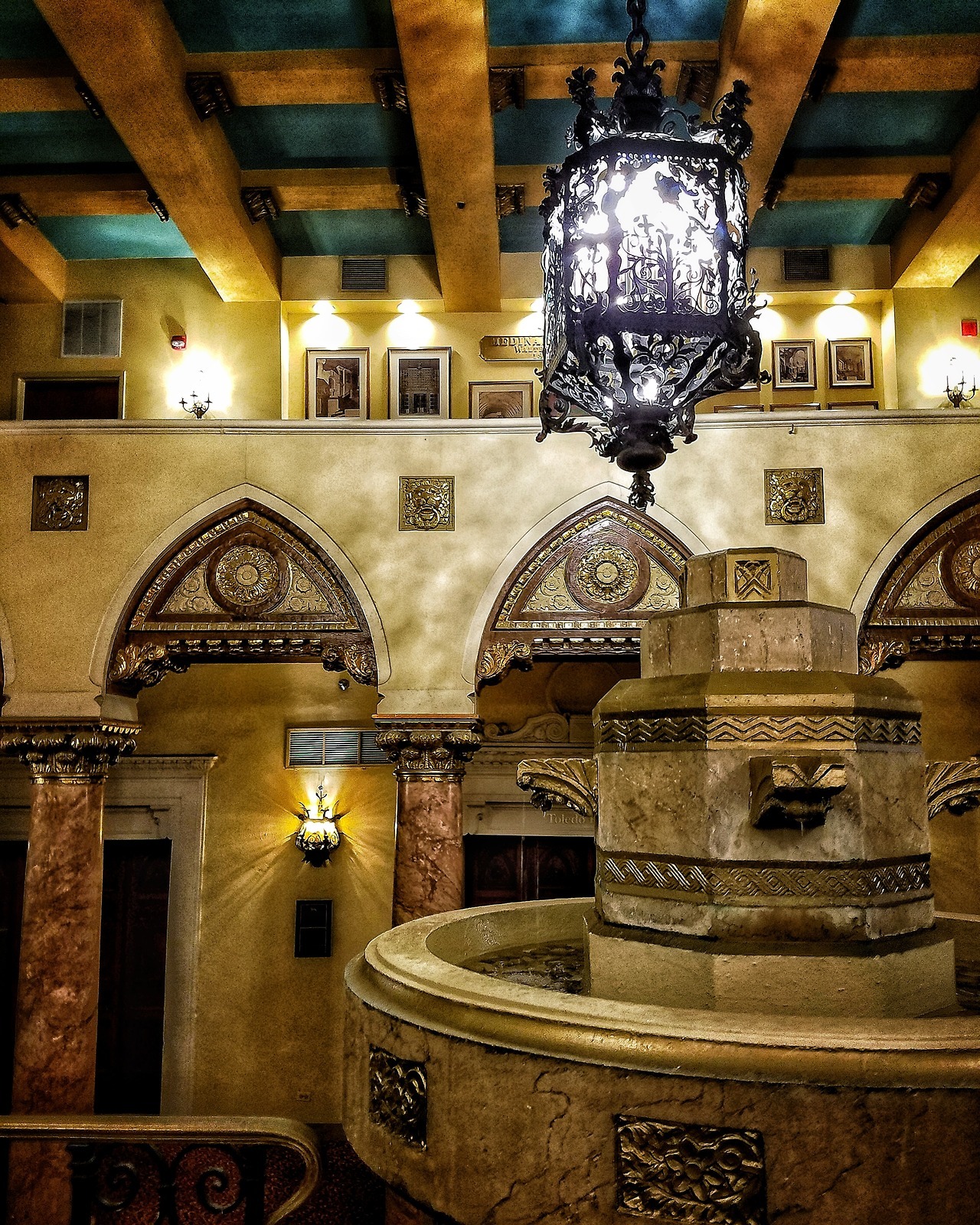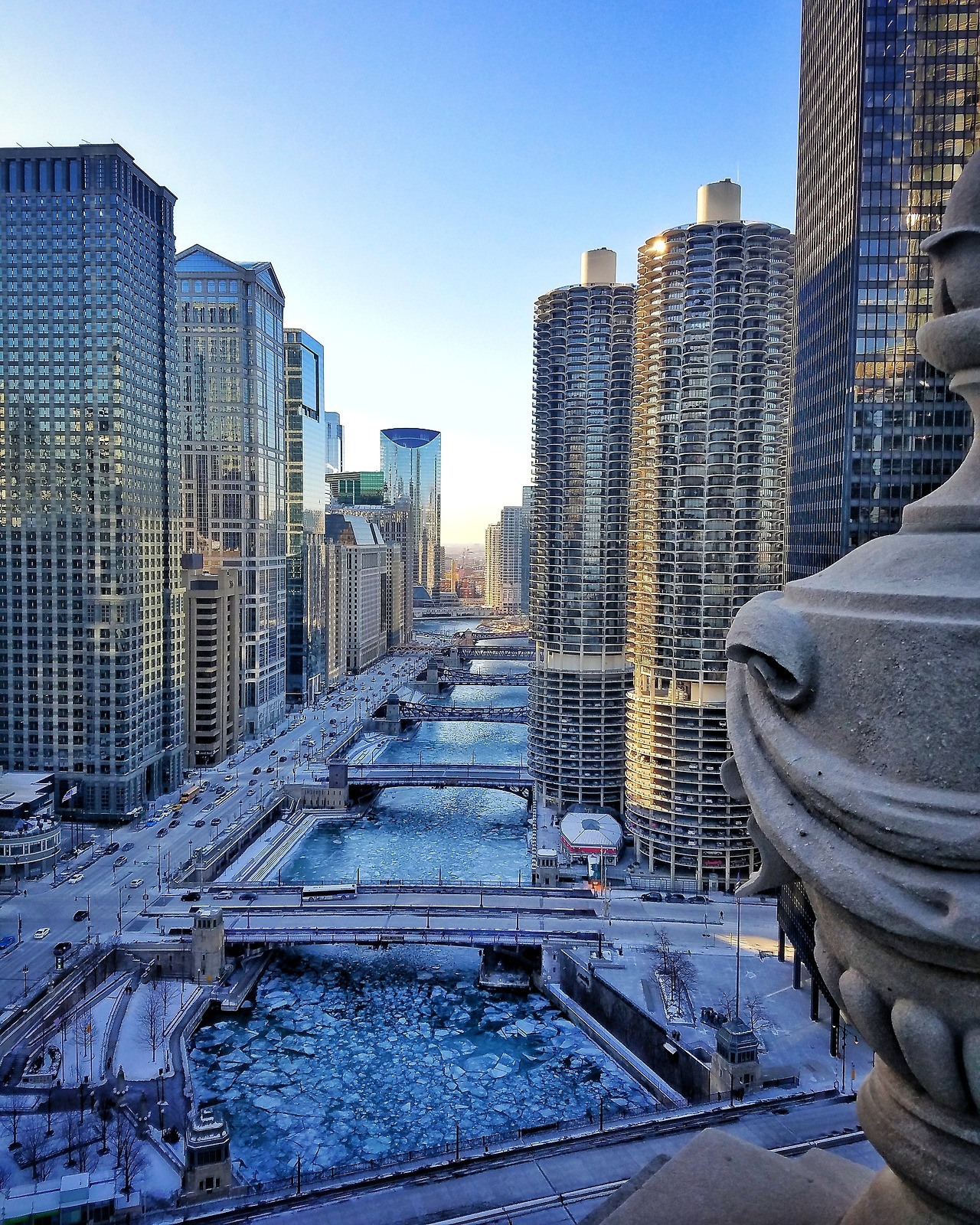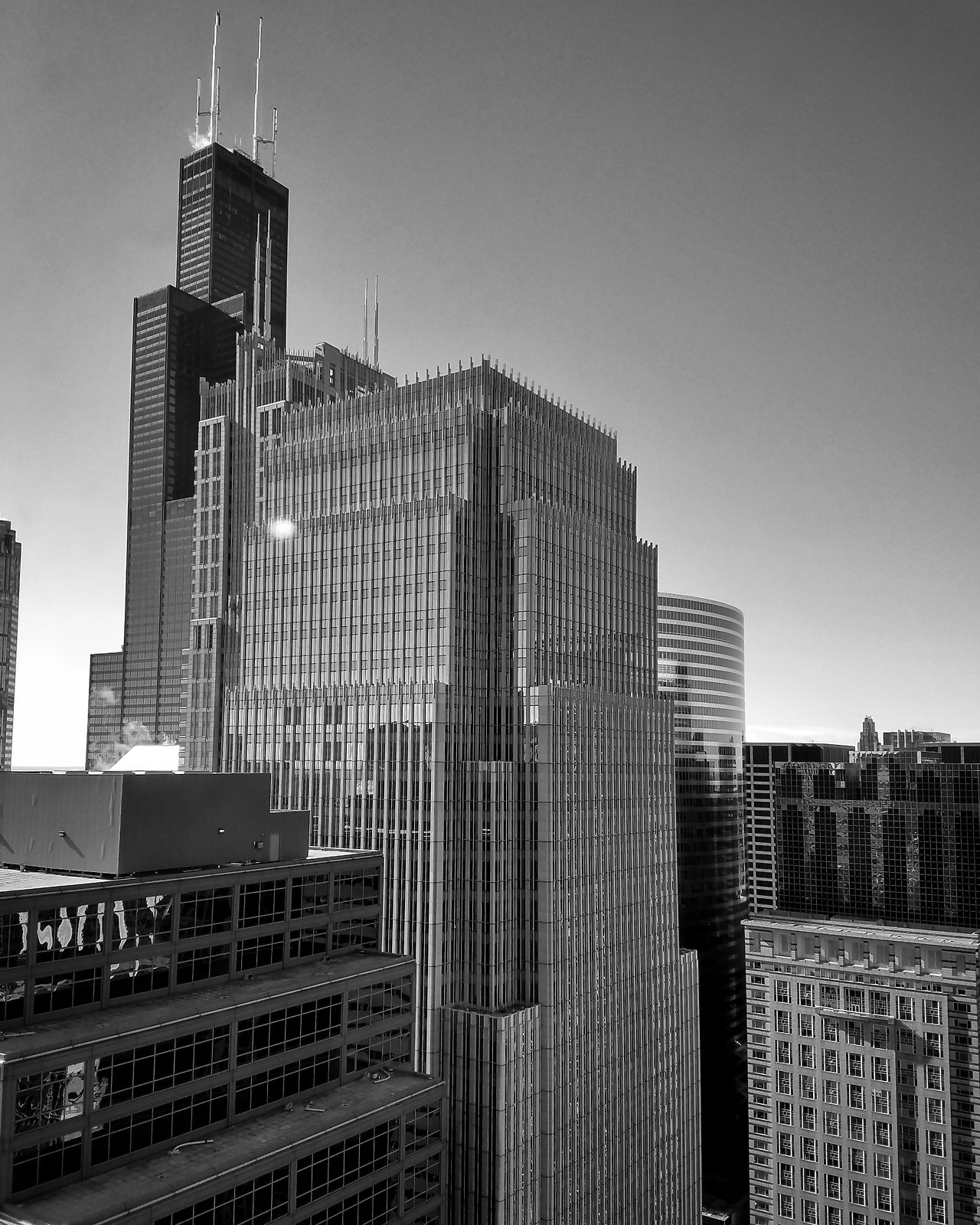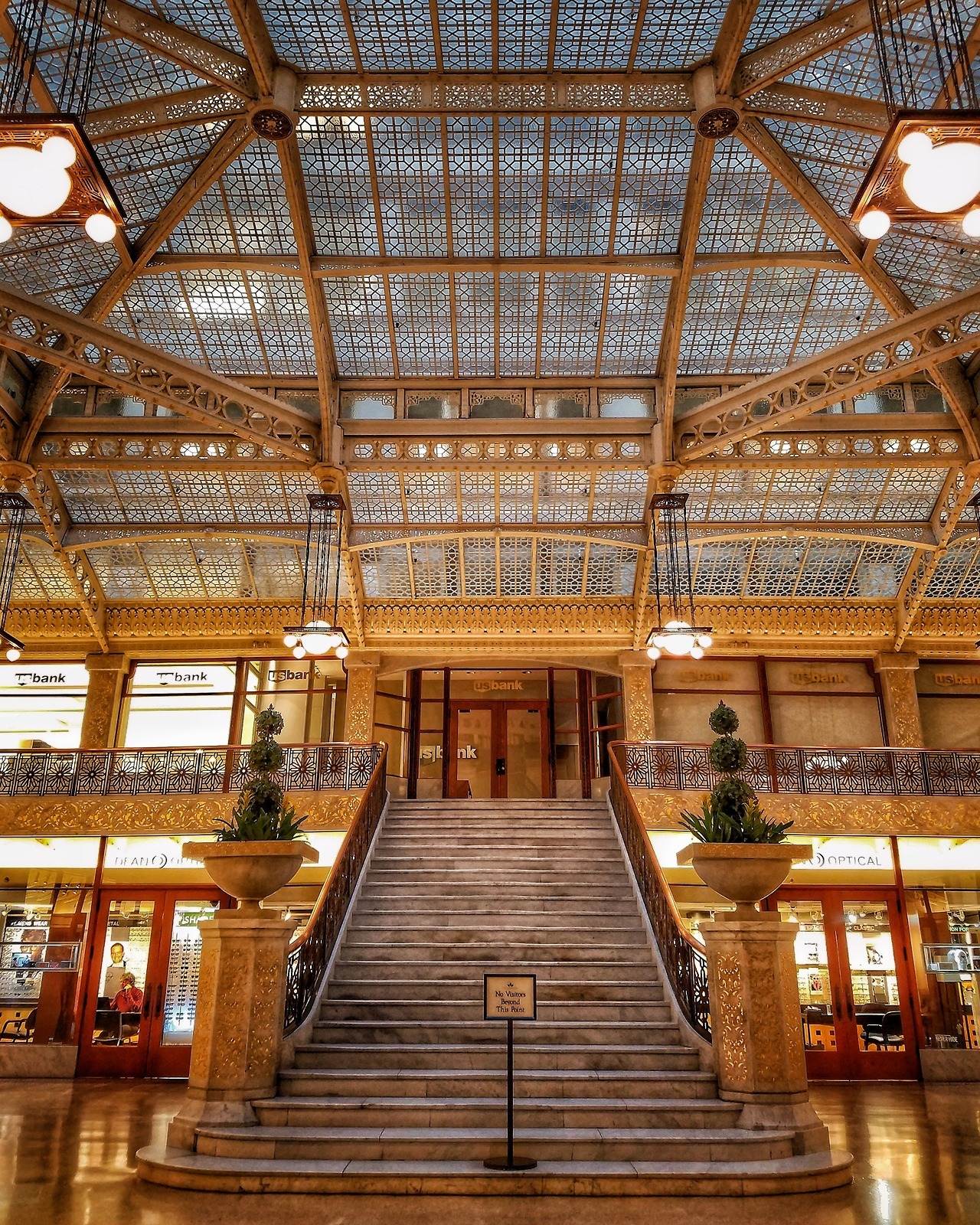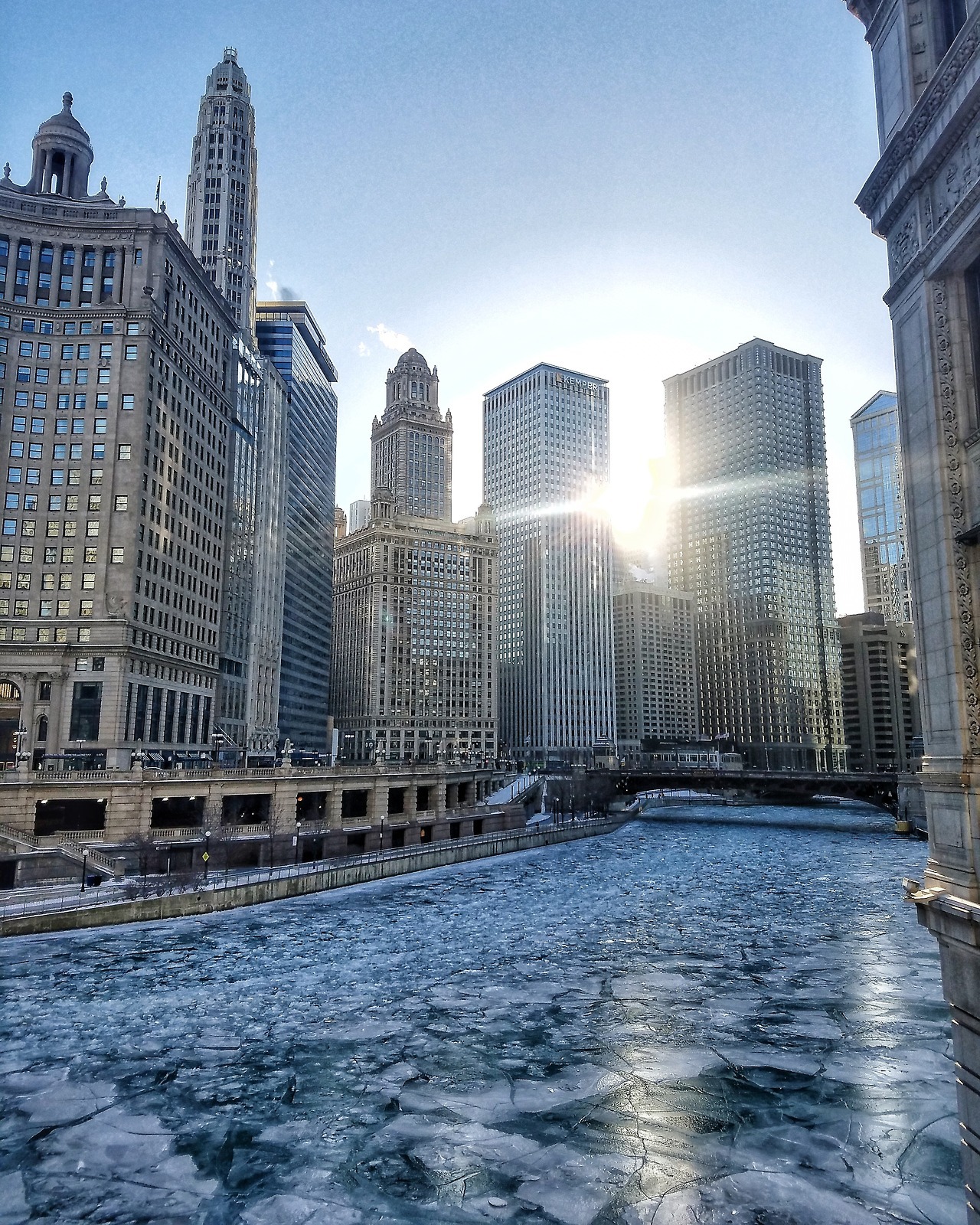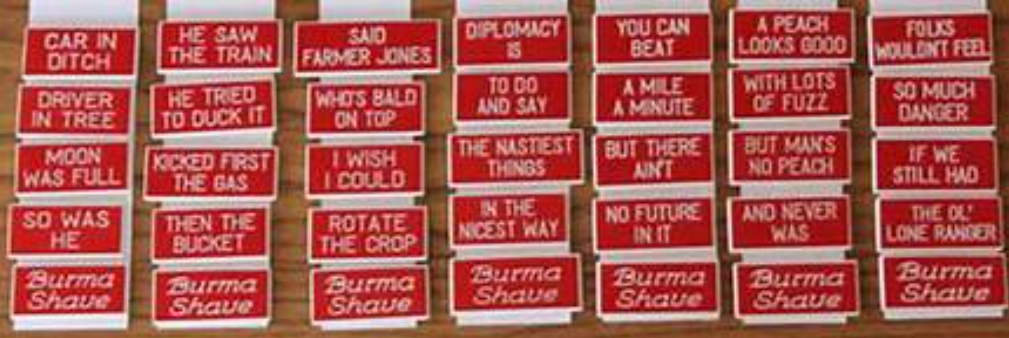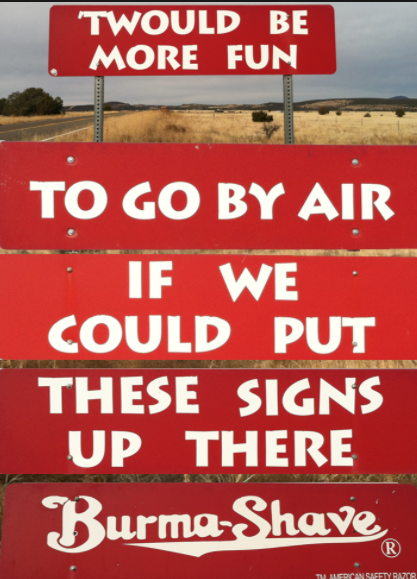Elevator lobby at InterContinental Chicago Magnificent Mile (formerly the Medina Athletic Club)
Photo by The Man On Five (January 2018)
chicago chicago architecture 2018 the man on five medina athletic clubBallroom lobby at the InterContinental Chicago Magnificent Mile (former the Medina Athletic Club)
Photo by The Man On Five (January 2018)
chicago chicago architecture intercontinental medina athletic club 2018 the man on fiveIce on the Chicago River, looking west from the rooftop of LondonHouse.
Photo by The Man On Five (January 2018)
chicago chicago architecture chicago river marina city marina towers londonhouse 2018 the man on fiveView of Sears/Willis Tower, Franklin Center and 181 W. Madison from the top floor of One North LaSalle, Chicago.
Photo by The Man On Five (Spring 2017)
chicago chicago architecture sears tower one north lasalle 2017 the man on fiveThe Rookery, Chicago.
Photo by The Man On Five (January 2018)
chicago chicago architecture rookery frank lloyd wright the man on five 2018 burnhamFrozen Chicago River.
Photo by The Man On Five (January 2018)
Follow The Man On Five on Instagram at https://www.instagram.com/garrett_karp/chicago chicago architecture chicago river wacker drive winter 2018 the man on five michigan avenue- https://themanonfive.com/
According to a report from the National Renewable Energy Laboratory, wind turbines are predominantly made of steel (71-79% of total turbine mass); fiberglass, resin or plastic (11-16%); iron or cast iron (5- 17%); copper (1%); and aluminum (0-2%).
Many turbine components are domestically sourced and manufactured in the United States (Wind Technologies Market Report). Wind turbine towers are 65-85% domestically sourced, blade and hub components are 40-70% domestic, and nacelle assemblies are over 90% domestically sourced. However, many internal parts such as pitch and yaw systems, bearings, bolts, and controllers are typically imported.
Learn more: Wind Energy
Related Content
Can wind turbines harm wildlife?
A key challenge facing the wind industry is the potential for turbines to adversely affect wild animals both directly, via collisions, as well as indirectly due to noise pollution, habitat loss, and reduced survival or reproduction. Among the most impacted wildlife are birds and bats, which by eating destructive insects provide billions of dollars of economic benefits to the country’s agricultural...
How are wind turbine data collected?
The U.S. Wind Turbine Database project compiles wind turbine information from the Federal Aviation Administration (FAA), Lawrence Berkeley National Laboratory’s (LBNL) Wind Technologies Market Report dataset, the American Wind Energy Association’s (AWEA) wind turbine and project datasets, and the United States Geological Survey’s (USGS) legacy (2014) wind turbine dataset, as well as online sources...
How many wind turbines are installed in the U.S. each year?
The number of turbines installed in the U.S. each year varies based on a number of factors, but on average 3,000 turbines have been built in the U.S. each year since 2005. Learn more:Wind EnergyU.S. Wind Turbine Database
Is there an international wind turbine database available?
No. To our knowledge, the U.S. Wind Turbine Database (USWTDB) is unique. Other datasets might be available from other countries on an ad hoc basis, but we are not aware of any central repository of those data. For general information and statistics on international wind projects, see thewindpower.net.
Why is it important to know the locations of wind turbines?
No publicly-available, national database of wind turbines existed prior to the creation of the USGS Windfarm mapper, which was replaced with the U.S. Wind Turbine Database (USWTDB) in 2018. Knowing the location of individual turbines and their technical specifications creates new opportunities for research and improved siting and is important information for land and resource management. In...
How often is the U.S. Wind Turbine Database updated?
The U.S. Wind Turbine Database (USWTDB) is updated every three months [or four times a year] and contains turbines that were installed as recently as 3 months preceding the update.Learn more: Wind Energy
